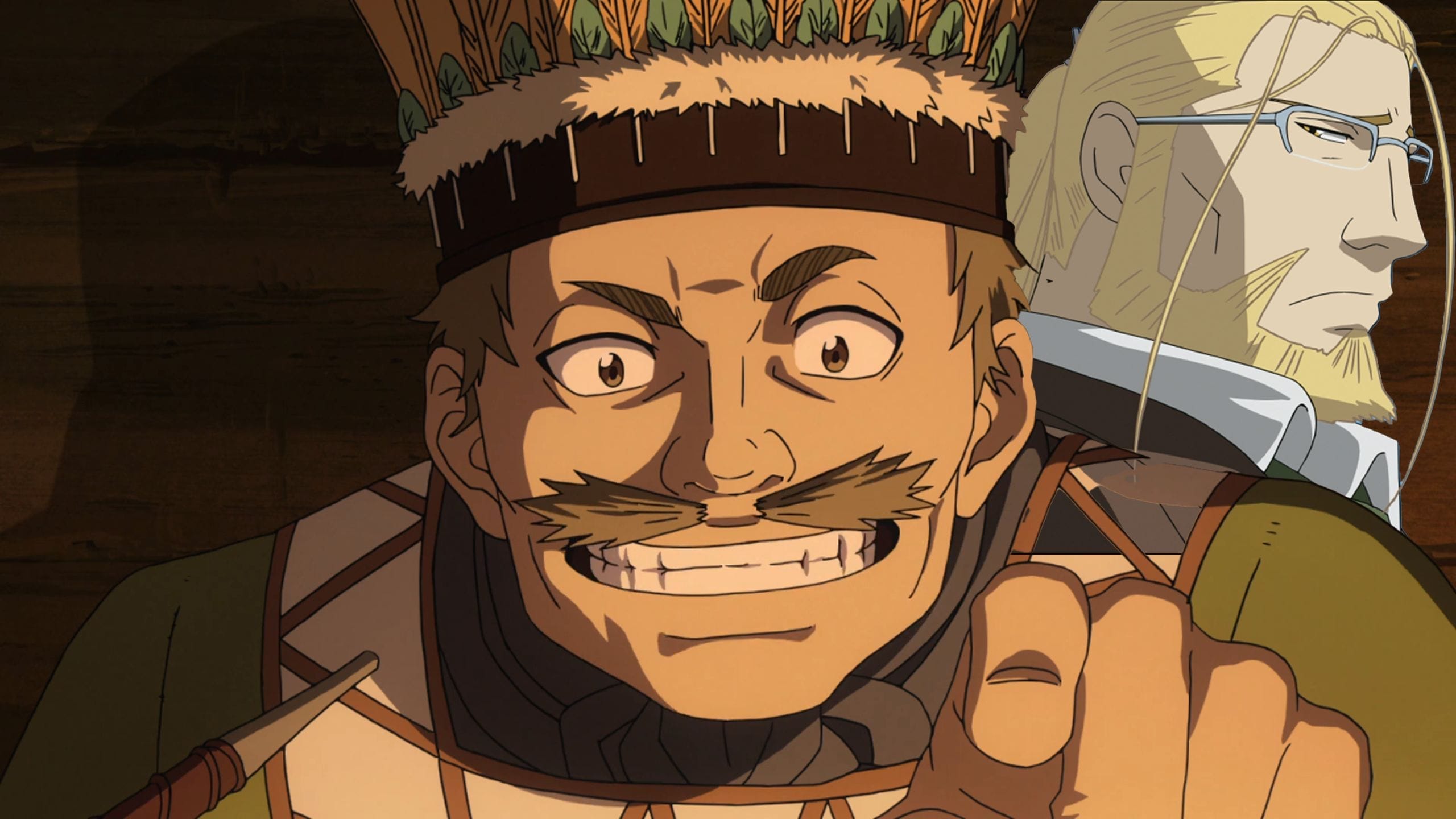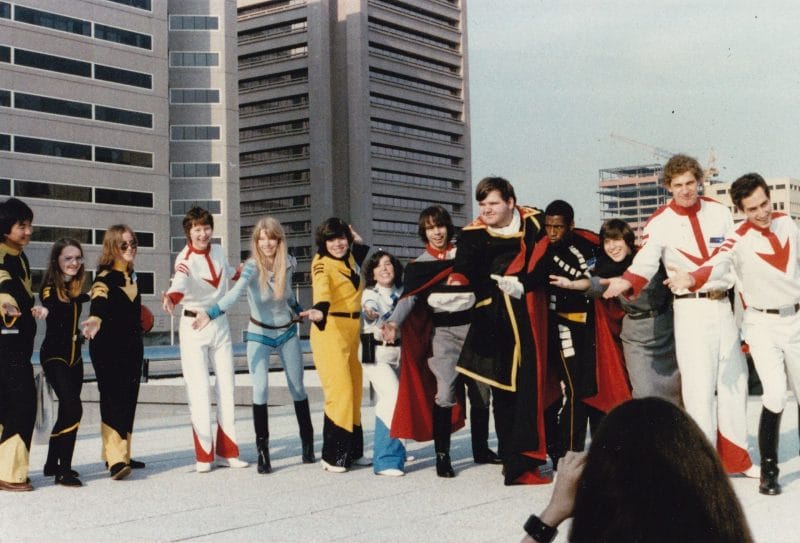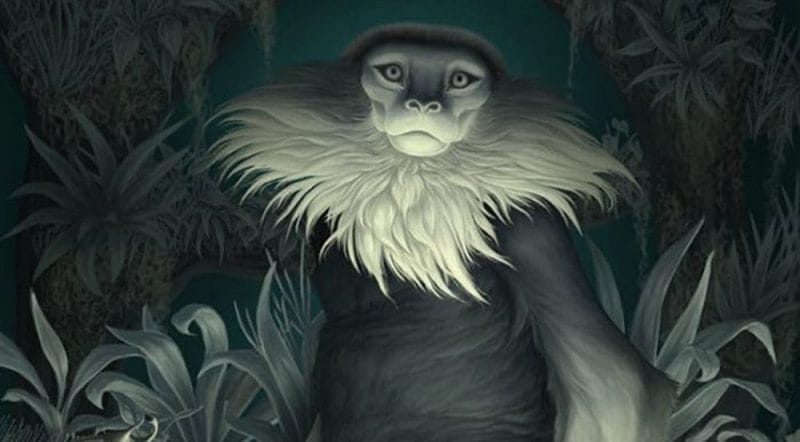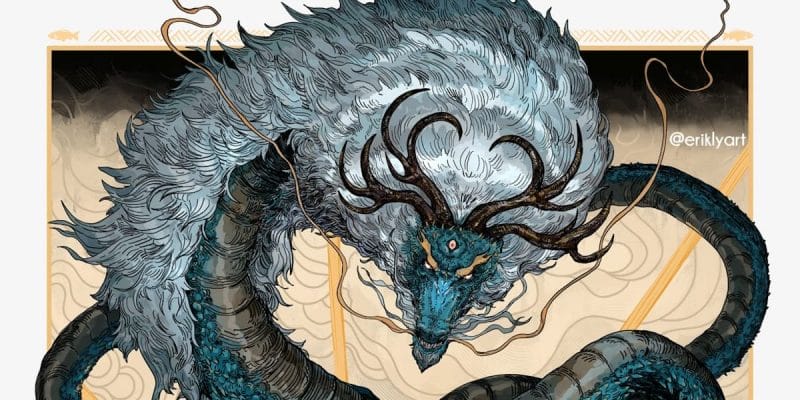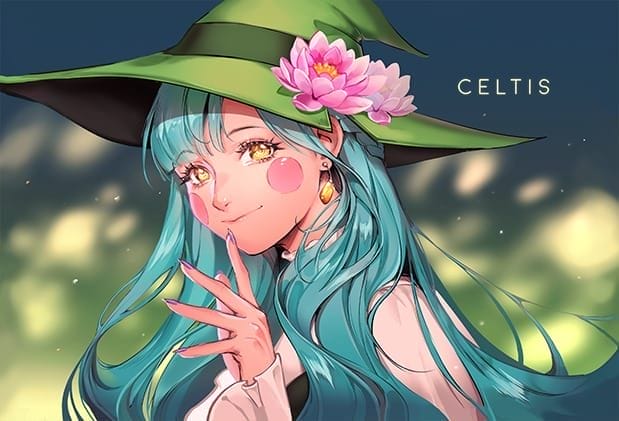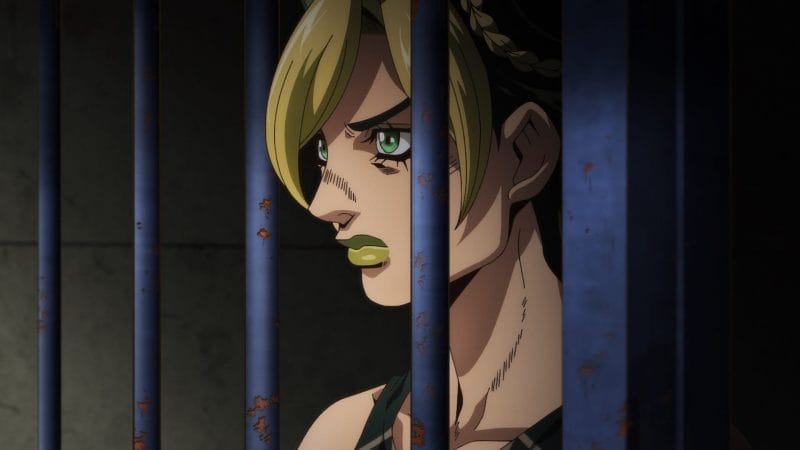- Date: 4/7/2023
- Location: Anime Boston 2023
Boston Bastard Brigade: So, so first of all, been a fan of yours for a very long time ever since the old ADV Films era of sorts. So, I guess my first question will be about probably one of your most famous roles, which is Gendo Ikari from Evangelion. Now, he is kind of one of the most hated father figures ever in anime. But, since you got to play him in the Director’s Cuts and in some of the Rebuild of Evangelion, I would love to hear your own personal take on him. Do you feel like he’s a bad father? Do you think he’s misunderstood? Or do you think there’s something else that’s really going on with his mindset?
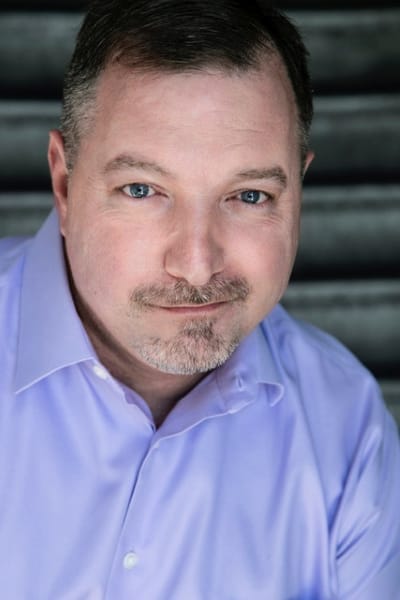
John Swasey: A little from Column A little, a from Column B, and a little from Column C. I think he is misunderstood. But, you know, when you when you deal with, so first of all, I play a lot of dads and a lot of bad guys. Sometimes they’re the same guy. But for me, I think that somebody like a Gendo, doesn’t see what they’re doing is “evil” or “bad” or “wrong.” They have this goal to accomplish. And it’s kind of like, whatever it takes to get it, that’s what I’m going to do. Everything else be damned. I don’t care. It’s, that’s of no consequence to me, including maybe killing your own son. So, it’s, it’s, I think it’s just his wiring. That, okay, it’s like, is there a duck behind me? What’s going on with the chair? So, I think he’s just misunderstood. I don’t think he sees what he’s doing is necessarily as evil. I don’t think he’s benign to the fact that what he’s doing is questionable. But again, I think it’s, “I don’t care. This is what I want to accomplish.” I think that’s his MO. Pretty much his driving driver, if you will.
Boston Bastard Brigade: Good answer!
John Swasey: Well, good question.
Anime Herald: What first got you interested in working in anime? What was the driver to get into the industry?
John Swasey: So, okay, I got that question for you. So, I am from Houston, Texas, originally, where I live currently. And when I graduated college in ’90, excuse me ’87, I went back to Houston, wanting to be an actor. I got a degree in theater from Sewanee, a university in the south in Sewanee, Tennessee. And I wanted to be an actor, and I came back to Houston and started acting. I started doing improvisational comedy and sketch comedy. Did a little theater, started doing commercials and films and stuff like that. And then really started doing voiceover commercials and training videos and such. And in 1997, and I was, you know, knock on wood. I was making a good living. I had a family starting and I just got married. I guess I didn’t have kids yet. But I was doing fine. I was loving life. And somebody said, “You ought to do anime.” And I was like, “What’s anime?”
And they said, “It’s Japanese animation.” I said, “Well, I don’t speak Japanese. So, I can’t, you know, what do want me to do?” And they said, “Well, that’s okay, because we don’t do it either. We dub it into English.” And I said, “Oh!” And so, I went and auditioned for this company in Houston called ADV Films. And had arguably one of the worst auditions I’ve ever had in my life. Because I didn’t understand the process of ADR. I just didn’t even know what anime was. I was, you know, why does everybody have spiky blue air? I don’t get this, you know.
And, in ’97, in all fairness, it was still a very niche genre. You know, I said it my panel today, it’s like, the video store didn’t even have a section. They had a shelf. You know, that’s how that’s how minute it was. So, anyway, I asked to audition again. I had a terrible audition. I said, “Listen,” I went to my car. I came back and I said, “Can I try this again? I know I can do better.”
And they let me do it again. And I did a lot better. And then I got my first role in the show called Golden Boy as the role of the Director. And, ah, I had a couple of people come up to me today at my table and you know, say “Dude, I loved you in Golden Boy,” and it’s just like, “I’ve never even seen it.” I rarely watch the work I do. I don’t, you know, some people ask me, also like, “What, what, what’s your favorite anime to watch?” And I’m like, you know, I direct full-time. All day. I don’t go home and unwind by watching more anime. You know, it’s just so. But anyway, that’s kind of what got me into it.
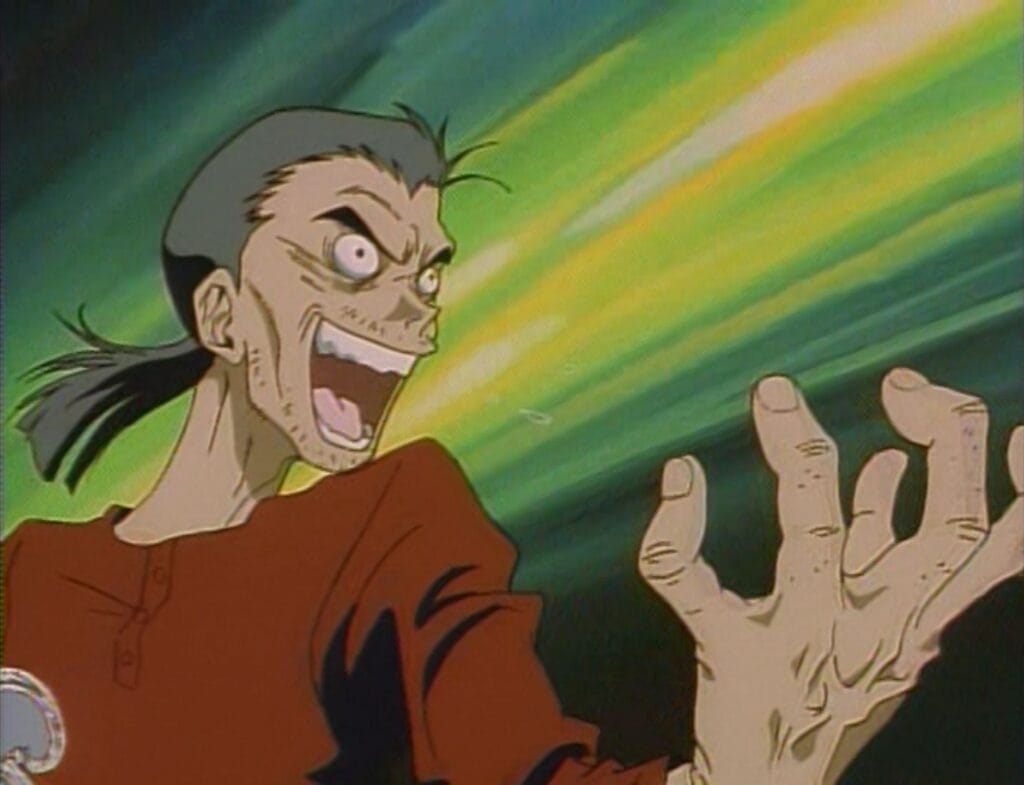
And then, for me, for a couple of years, it was really just another gig. I didn’t really, you know, “Oh, great! Gonna do more cartoons,” you know. And then ADV really started to grow. They added studios, added directors. And a lot of guys that I worked with in the advertising world, copywriters, and stuff like that, came over to be directors, so I started working with them. And it was like, “Man, this is really cool.”
And ADV, in its prime, those prime years, in the early 2000s… Oh, my gosh! I mean, actors we were- they had studios running from nine in the morning till ten o’clock at night. And there was a shift change at four o’clock, like a factory. And actors, we were just going over there all the time working. And, you know, it was a real cash cow for a lot of actors. I mean, not a cash cow so much as just steady work, you know. And then I started directing there, and slowly but surely, I’m now- ADV became Sentai, I started working at Funimation doing shows for them. And now I’m a full-time director, at Sentai and act full-time doing anime, and I rarely have time to do any other type of acting, except this.
And so, it’s kind of interesting for me that, you know, my daughter is an actor as well, she just graduated U of H and she’s a voice actor and screen actor and all that. She does a lot of anime, and she’s kind of getting her name out there. And I just said, “you know, you’re doing great. You’re so far ahead of where I was.” Because, you know, when I started, it was very, just, you know, the size of this tab. The size of this room! You know, the example I like to give is, when I first started doing anime, there might be one or two conventions a month. Now there’s six and seven a week around the world. And they’re everything from Anime Boston, that’s, you know, 25,000 people, all the way down to some anime club at a library with 250 people.
And it’s, but it’s just this love of this culture and this genre that it, and I’m giving you way more than how do I get started, but it’s one of the things that I really love about it is, and I think that the reason I’m so happy just to be where I am right now, is I’m a big deadhead I love the Grateful Dead. Have a Grateful Dead tattoo right there. And in fact, this is, I’m, like gonna look around the night see if there’s any Grateful Dead cover bands anywhere in the neighborhood because I want to go check it out.
But anyway, one of the things about a Grateful Dead concert is that everyone there is for the same reason. We’re all there to see a show, have a great time, lift each other up, love each other, and all that. And that’s the same vibe I get at an anime convention. And, you know, as we all know, so many anime fans are on the spectrum, are outcasts, are the victims of bullying, or you know, whatever. But here, they’re all safe. And they’re all lifted up, and supported and I just, it’s beautiful. I think the world could take a lesson on how to get along from an anime convention. Personally, so… that’s how I got started! And why I continue to do it today.
Boston Bastard Brigade: I don’t have a follow-up after that amazing answer but…
John Swasey: Put that in an article!
But anyway, one of the things about a Grateful Dead concert is that everyone there is for the same reason. We’re all there to see a show, have a great time, lift each other up, love each other, and all that. And that’s the same vibe I get at an anime convention.
John Swasey
Boston Bastard Brigade: Let’s talk about more of the father figures he played. One of my personal favorites, well I think one of the funniest performances to date, is that goes to Gozaburo Seto in the show My Bride Is A Mermaid. He’s tough, and really tears into Nagasumi whenever he can. But he is [also] a big softy for his daughter Sun. So, what went into bringing so many different personalities into this one singular character?
John Swasey: So, you know, when we get cast as a role, I mean certainly having done this for as, you know, luckily and as long as I have, you know, we get people- we get typecast are kind of pigeonholed, which is fine. You know, I’d rather just people go “You mind being in typecast?” I’m like, “No, I’d rather be typecast than not cast, so…”
But we all, you know, kind of have voices and stuff that’s in our wheelhouse, and dads are certainly you know, Gozaburo was interesting because everything he did he yelled. I mean, you’ve seen the show, you know, he’s like, “HELLO!” “You want to say grace?” “YES!“
So, when we recorded that, we would actually record for about fifteen minutes, and then take about a forty-minute break, just to let my vocal cords relax. It’s like doing a video game or something. I mean, just, you’re pushing so much out. But, you know, that’s just one of those shows that you, I mean, all shows, but that show in particular, because we recorded it differently and back in the old days, we would record the whole show like a twelve-episode show at once.
Boston Bastard Brigade: Wow.
John Swasey: So we could package it all together. Actually, let me back up. Way back when, we did two shows at a time because that’s all you could get onto a VHS tape. Then when DVD came out, we could do the whole season of twelve episodes, because that would all fit on one DVD. And it’s more cost-effective to do it that way. Because you’re paid by the hour. So, if I bring you in for a hundred lines, it’s going to take two hours. But I can, in the next episode, you’ve only got, let’s say 45 lines. I could bring you in for everything at once, or break it up for four hours today, four hours tomorrow kind of thing.
But the point is, is that when we were doing Gozaburo, we were doing the whole show. Now there everyone, we do these dubcasts or simulcasts, where it’s one episode a week. And that’s to kind of stay in line with or combat pretty much piracy. It’s, it’s, you know, when the Japanese version comes out, we want our version out pretty quick. But so we were doing that. So, it took a lot of toll and toil on my voice. But I just really had to rely on the director to you know, steer me and, okay. And this, you know, “Now he’s really upset,” or “now he’s, you know.” You can see a lot just when you’re doing it, but sometimes you really lean on the director a lot for a lot of guidance. And that was a show that I definitely did that for, so…
Boston Bastard Brigade: Awesome performance.
John Swasey: Yeah.
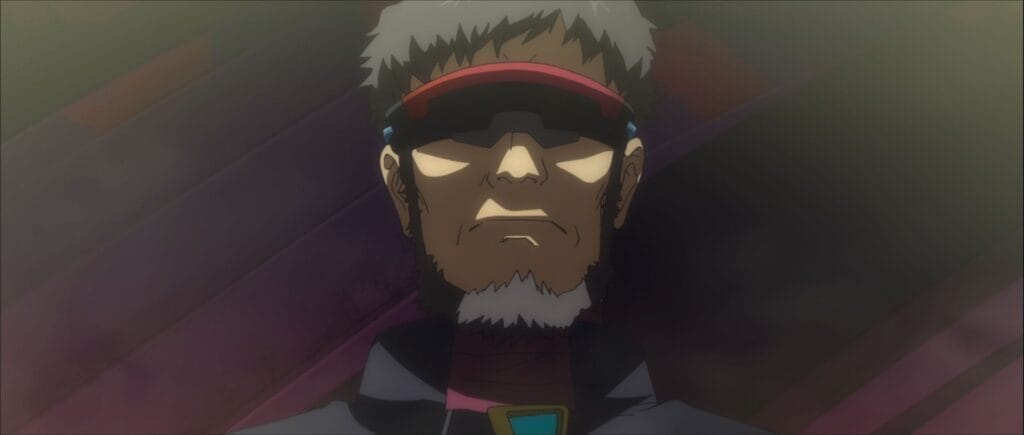
Anime Herald: You just mentioned that the dubbing process has changed to adapt to the stream those, the streaming era. In particular, you’ve been in industry in this industry since 1996. What would you say has been the biggest, most substantial change to the overall dubbing process as we enter the modern era?
John Swasey: Well, every studio that I’ve ever worked for, whether it’s Sentai, Funimation/Crunchyroll, or Dubbing Brothers are, everyone’s kind of got their own method of recording. That just the fact that everything’s digital now has certainly been a game changer. Because you can, you know, you don’t, I mean, you can eat up disk space, but there’s so much of it. It’s not like spinning tape, where you’ve ruined a whole reel of tape or something, you know. And I would say for me, that things, we’ve just noticed changes. Like, for instance, when I first started at ADV, they used a method, it’s called the chase method. I don’t really know why they call it that because we’re not chasing anything. But basically, in traditional ADR, and Sent- excuse me, Funimation or Crunchyroll, whatever they’re called, still does this today. They have a beat system where it goes “beep, beep, beep.” And then, you talk on that fourth beep, and it should time out pretty well. And when you look at a script, it has notations on it like “an ellipses means a pause,” “underline means mouth not seen,” “italicized means it’s a mental thought.”
At Sentai, we don’t use the beep system, we just chase it, but basically, we wait ’til we hear our character start to speak, but we get a three-second pre-roll. So, it’s almost like a silent beep. So, we just go if you’re going to start at 01:02:20, it would start at 01:02:17. And it goes 17, 18, 19, and he starts to talk.
And, you know, there’s a certain pace. You know, we want to take it, you don’t, you don’t, deliver lines (speaking fast) “like this all the sudden and,” then slow down again. It’s just it’s a nice even pace. So, but then the engineer can just slide The line and we can, you know, stretch it, or shrink it, or add words, take out words, all kinds of things. But it’s just a very fast method. It used to be that we would do, like, one line at a time. And now, in Houston at Sentai, will do whole scenes at a time, just let the actor go. And if they’re really good, like a Luci Christian, or a Monica Rial, or Brittany Karnowski, or, you know, Adam Gibbs, Christina Kelly, they’ll just, they’ll go right through the script. And it just, it’s, you know, really magical, but it lets the actor kind of get into the scene, you know, as opposed to doing one line at a time. It’s very, it’s more of a sterile feeling. To me. It’s nothing wrong with it. It’s not necessarily better or worse, but…
So, the biggest change I’ve seen is the digital shift. But other than that, it’s kind of the same way we’ve been doing it for a long, long time, you know. And then I will say this, too. The other thing, this is kind of pandemic-y, post-pandemic, is, is the remote recording. That technology has come a long way. We were, as an industry, just forced to embrace it. And, you know, now we’ve got studios. When I would be in Lancaster, Pennsylvania, and somebody goes, “Hey, I want to how do I get into voiceover? How do I get into anime?” And be like, “Well, the first thing you got to do is leave Lancaster, because there’s no, the Amish don’t do it. So…” But now, you can live in Lancaster and have a home studio. And you can work from anywhere in the world. That’s the good news. The bad news is, so can the entire world. So, the talent pool and the competition has grown significantly. So that’s a, that’s kind of a tough thing. But it’s, it’s still kind of the same old method we’ve been doing for a long, long time.
Boston Bastard Brigade: So this is one of my favorite questions to ask. If you could erase every memory of having played a character, you know, gotten to know them, and discover them, and go back through that process of discovering them for the first time again, which one would you choose? And it doesn’t necessarily have to be an anime if you’ve done other acting, whichever one you think. But obviously, if it’s anime, that’s cool.
John Swasey: Like if I were going to do a character that I’ve done, but pretend I’ve never done it before?
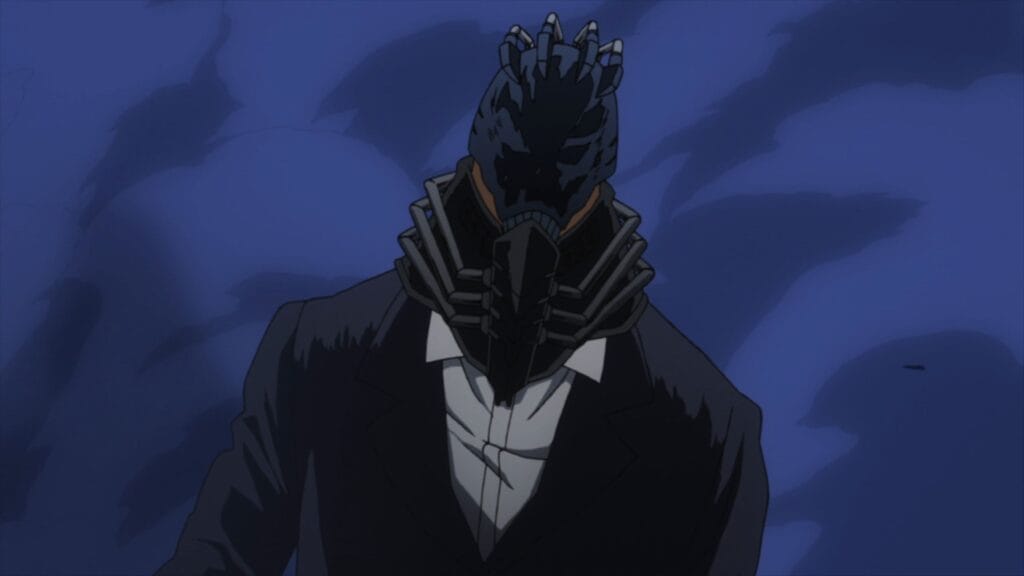
Boston Bastard Brigade: Yeah, with all the memories of you having done it have been wiped, and then you would go through the process of doing it again.
John Swasey: That’s an interesting question. I’ve gotta… If I had to pick one, I probably would pick All For One from My Hero. And the reason is, when I started doing All For One, I didn’t have a clue who he was. I didn’t have a clue what the show was. And a lot of times, when we when we bring in out-of-town actors, or when I go up to Dallas, I live in Houston, Dallas is four hours away. They’re very good- The studios are very good and generous with trying “Oh, they’re coming in from out of town for this director. Anybody else got any work for them that we can throw more money at them?” And it’s you know, it’s wonderful! Great.
So, I was up doing something. I don’t know what it was. I don’t know what show was on. I was like, maybe Alice and Zoroku, or something. And somebody said, “Oh, hey, listen, Colleen needs you for an hour, or thirty minutes. Are you available?” I said, “Yeah, great! Add it on,” you know, stack up the hours. And I would go in, and she’d go “Okay, this show is called My Hero Academia. And you’re playing this guy named All For One. And he’s really not seen a whole lot right now, but you’re perfect for it. Blah, blah, blah.”
And literally, I would go in and they go,
“Okay, you ready? And recording!”
“Excellent. Very well, then.”
“Okay, thanks! Thanks for coming in!”
And that was it! And I’m, like, “Well, what’s this dude about?” You know, and I had no idea. And it wasn’t until, you know, like another season before I started. In fact, I’ll never forget, it was at a convention and Colleen Clinkenbeard, the director, was sitting next to me. And she’s like, “Why don’t you have any prints for All For One?”
And I was like, “For who?” She goes, “All For One, John, My Hero Academia. It’s the hottest show in anime right now.” And I’m like, “It is?” And she goes, “Oh my gosh. John. Let me school you a little bit.” So, she did. And I’m like, “Oh, my word. I had no idea!” And then, of course, she started right after that. It was like, “we need you for four hours,” and it was much bigger stuff. And then I was like, “oh.”
So, I don’t know if I would have approached it any differently. But and there’s not a whole lot to do with “Excellent,” you know, That’s it. But it would have been cool to know more of what was going on, you know,
Boston Bastard Brigade: The bigger picture.
John Swasey: Yeah, yeah. And I, I don’t know if anything would have been different, but it is kind of cool too, it’s exciting when you know, you know, kind of what’s coming. A lot of people I know read the manga, and they’re like, “you know what’s about to happen?” I’m like, this was like a year ago, I’m like, “No? I don’t?” “Well, it’s about to get crazy.”
Which is really funny. Because to me, especially with All For One, because, you know, we, when we last left our villain, he was locked up in prison. And I was just, I remember thinking to myself, you know, that can’t be the way he ends. There’s got to be something bigger, you know, a final showdown. Some sort of “this is it,” you know, apocalyptic kind of whatever. And then, about two months later, a friend of mine at work image, she reads the manga, she and her husband, and she’s like, “J, you know what’s was about to happen with All For One?” It’s like, “No, what?” she goes, “Well, he’s gonna break out of prison. And blah blah blah, blah, blah, blah blah, and man, oh, my God, it’s gonna get crazy!” And sure enough, that has now started in the recording. So, the, you /know, animes are generally about a year behind the manga. So yeah, but that would be him.
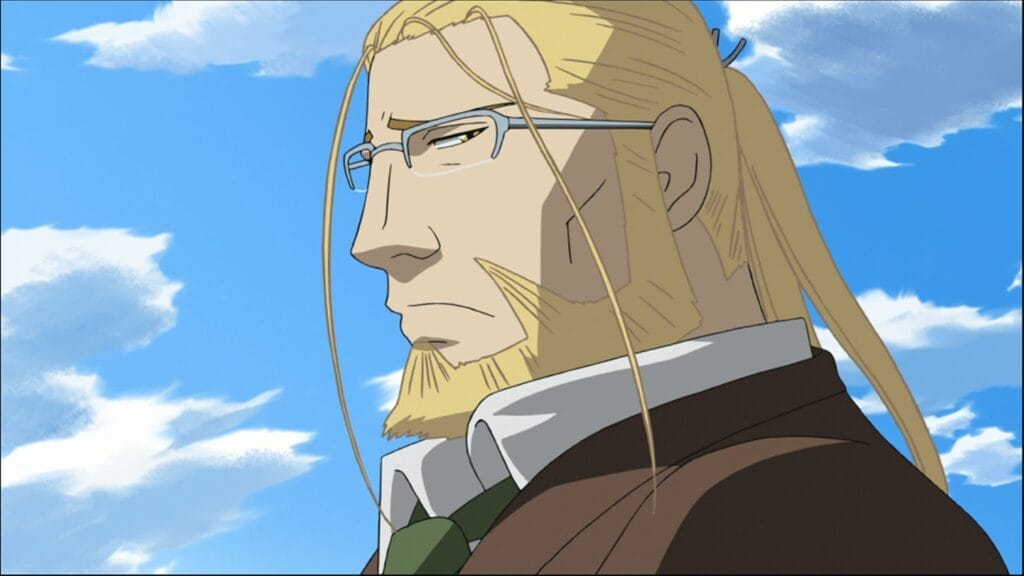
Anime Herald (Seth Burn): Earlier today, I actually interviewed Christina.
John Swasey: Oh, yeah!
Anime Herald (Seth Burn): And that was lovely. And one thing I asked them was how they got into it. And they were all traditional actors at first, as were you. Do you find that the pipeline is still the same? Is it still hiring a lot of traditional actors to work?
John Swasey: Absolutely, absolutely. I mentioned my daughter. She went and graduated from U of H. And, we have a lot of actors in our talent pool that came from U of H. And from Sam Houston State, which is in Huntsville, about an hour and a half north of Houston. And, because they’re very strong theatrical programs at those schools, I find that actors that have a theatrically trained background, a stage background, are way ahead and way better than somebody- when somebody comes in and goes, “I want to do voiceover,” you know, and “I just bought a new microphone and blah, blah, blah, blah, blah, blah, blah.” And I’m like, “That’s great. But to me, that’s like going ‘I’m gonna learn how to play the guitar. So, I went down to the guitar shop, and I bought a Fender Stratocaster for $2,000. And about a, you know, a rig and amps and pedals and switches, and I came home and plugged it all in.’ What’d you play? ‘Well, I don’t know how to play it yet!'” I’m like, “Well then, why did you do all that? That’s, that’s putting the cart before the horse.”
You know, it’s like, “No, just you should, you should learn to act.” So, the most important thing is the acting. So absolutely. That’s, I found that’s where the strongest actors come from. Not always, there are exceptions to every rule, of course, but I try to use try to bring in actors that for one thing, the acting is there. Now all they’ve got to do is learn the mechanical process of ADR, which can be a little tricky, you know, learning this process. But, I mean, my first audition at ADV way back when, literally, this is what I did. I said, and I was I was a working actor, I was doing voiceover I knew my way around the studio. I knew, you know. They said, “Okay, so here’s your script, put on the headphones, you’re gonna watch the movie. And when you hear your character talk, you start talking.” and they said, “Okay,” and they said, “And Recording.” and I went (uncomfortably long pause, prompting chuckles from the room)
They’re like “John?” And I’m like, “Yeah?” like, “Can you hear the Japanese?” I’m like, “I think so.” “Okay, well, that’s your cue to start talking” and like, “Okay, and recording!” (second uncomfortably long pause, prompting chuckles from the room)
So, it you know, once I kind of figured it out, it’s like a light bulb going off. You know, it really works. But yeah, definitely. It’s a very good question. Because we get people all the time. You know, “I want to get into voiceover How do I do it? How do I do it?” It’s like, “Man, get into an acting class, get into an improv class, take a stage or film any kind of acting class, and then let it grow from there.”
And you want it to be an organic experience, not try to force it. Because if you come in and I’ve had this happen, actors come in that are just not very strong actors. And they came in and they just tanked and it’s like, “you know what, I’m sorry, but I’m,” I won’t tell them this, but I’m just like, “I can’t use you. I can’t use you and I’m not gonng use you again.” I don’t want to waste anybody’s time. So, it’s really better to have those trained actors to come in. For sure.
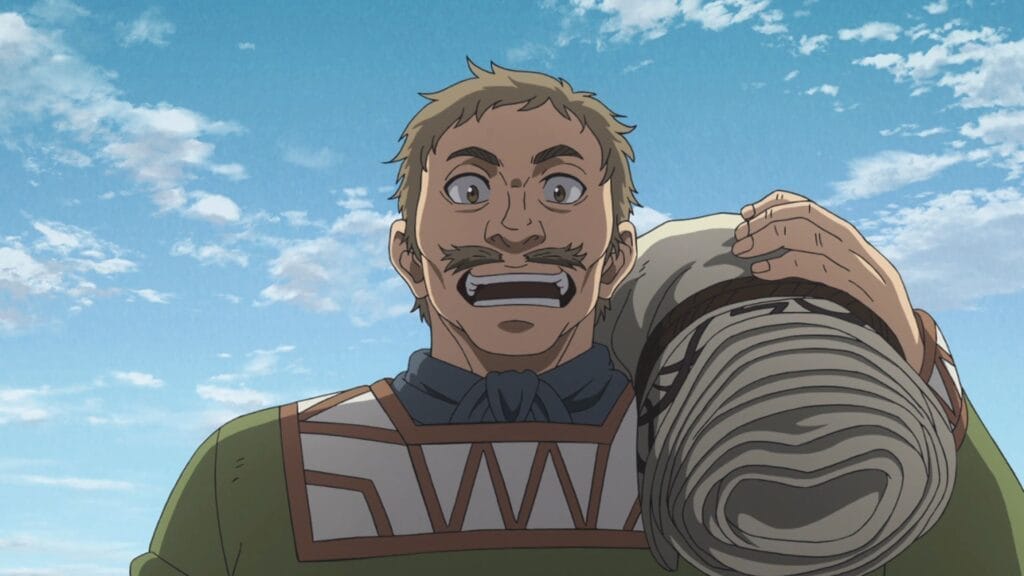
Anime Herald (Seth Burn): Thank you!
Boston Bastard Brigade: Okay, well, a little tradition we have is something where, instead of bringing three albums to a desert island, let’s say for the rest of your life, we’d like to ask what three actors? Or what three characters of your own would you bring to a deserted island? And why?
John Swasey: Aha! The characters that I played?
Boston Bastard Brigade: Yes.
John Swasey: Well, I would bring Salvador from Borderlands 2. But I would make him live on the other side of the island. I would bring… who would I bring? I think I would bring… who else? Maybe Kumatetsu. From The Boy And The Beast, because we probably could be good drinking buddies. And then, trying to think… Oh! I would bring… Oh, God, what’s his name? It’s a show I did a long time ago called Area 88. It’s about jet fighters, planes, and stuff. Because then we’d have a plane, we can get off the island. So, you know.
Anime Herald: This also one that I like to ask both fairly often. What would you say is most interesting or unusual things that have happened to you in the recording booth?
John Swasey: (laughs) Okay, so I got two little stories here. One is from me, and one is from my daughter. But it involved me. One of the things is I was directing, and in fact, I think it was Christina Kelly. And, you know, when the actor comes in, we don’t record in a linear fashion, meaning, we don’t start with the first line and just go down.
I mean, we’ll start with the actor’s first line, but the actor may not show up for five minutes in, and then I’m recording this actor that doesn’t come until here. And so, you just, it’s like a puzzle. And so, a lot of times, the actors don’t know the full context of what’s going on. So, it’s up to the director to guide them, and say, “Oh, I need you to be stronger on this word.” And, you know, “Say like this, because you’re referring to something that happened earlier, and you didn’t know about that,” you know.
And Christina Kelly had a line, and it was something like, “Well, that’s all fine and good, but what about me?” And I was like, “Hey, Christina, that was great! I want to redo it, though. And I, cuz you’re referring to blabbity, blah, blah, blah, you’re doing this. So, what I need you to do is do the line again, but this time, I’d like you to go down on me. (pause, followed by a look of horrified realization) No, I did not say that! I know. I am so sorry. I did not, do not call HR, we do not, we’re fine. I meant go down on the word ‘me!’ the inflection!” And we had a good laugh over that.
And one time, my daughter came into the studio. She was working with a dear friend of mine, Kyle Jones, a brilliant director and a partner in crime. We do a lot of fun things like; we did a movie together. It was his idea. It was a live-action movie called Gamera II. And he’s a turtle. And he’s like Godzilla, but he’s a turtle. And anyway, Kyle came up with the idea. And the Japanese loved it, by the way. We did the entire movie as a bunch of Texas rednecks. And great lines, like, “That’s a bigass turtle+
But anyway, so Kyle was in the studio. My daughter had gone in to work with Kyle and Kyle was saying, “So in this scene, you’re getting hit on by this guy and he’s kind of making some aggressive moves and, you know, you’re fighting it, but you’re kind of into it and blah blah blah blah blah.” She’s like, “Okay,” you know, she’s an actor, she’s a pro. When she’s in there, and he goes, “Let’s just watch it so you can get a sense of, of what’s going on.” And she’s watching the scene. And she’s tracking with it, and everything. And she starts to think, “Wait a minute. Why do I know that voice? (pause) Oh my God! That’s my dad!”
She looks out Kyle’s just, “Baaaaaaaaaaah!” Busting a gut. We do. We do like to have fun in the booth.
You know, Gibbs- Adam Gibbs, you all interviewed earlier, and there’s another actor in Houston named Scott Gibbs. And they’re not related at all. Scott’s very tall and Adam’s very short. But they’re both amazing, amazing talents. But a lot of times we’ll get actors, you know, because when they come in if the other actors have recorded already, that actor gets the advantage of hearing what the English is. So, it gives them a better chance to react and act. But a lot of times in a scene, you know, right in the middle of the scene, the other actor will say, like, “Well, Scott Gibbs never would have done that,” or something like that. It just throws Adam up. We just like to have fun and we leave, they call them “bombs,” but it’s just, it’s just fun ways to throw the actors off and just keep it light. You know, we’re all there for a good time and to have fun. If you’re not having fun. It’s not gonna be good.


